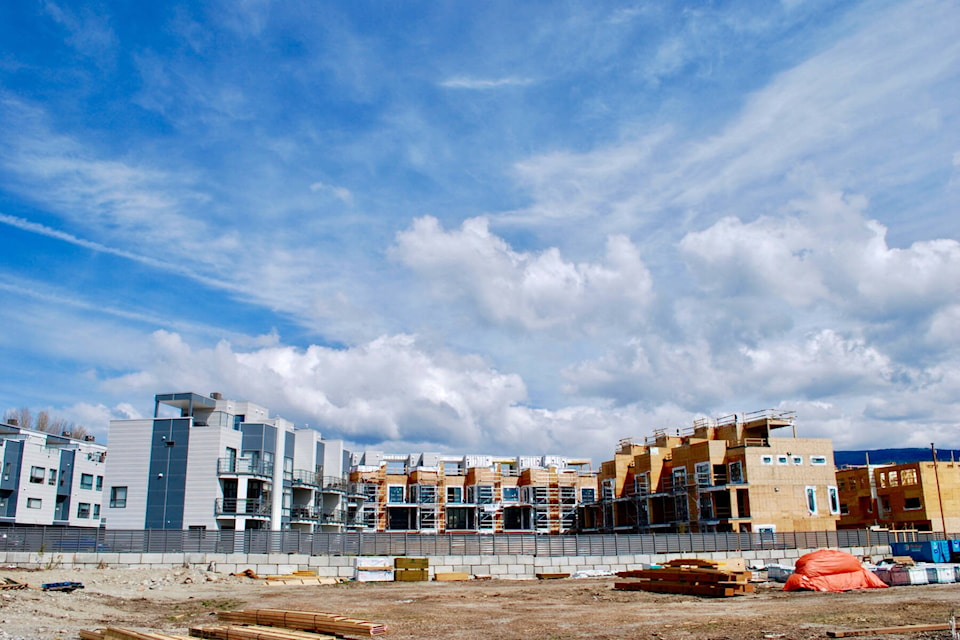Fresh air and a brisk walk is a great way to start the day. Sadly, walking in the development oriented Penticton North West puts me at the epicentre of major changes…and tree loss.
It’s an almost minute by minute disappearing act. Buildings and trees seem to vanish overnight. To document what will be lost I wander down lanes and side streets. Last spring I felt heartbroken when a large cherry tree seemingly evaporated…splendidly draped in blossoms one day, gone the next.
Other losses are announced with the roar of a chainsaw. A bountiful willow vanished over a couple of days. Dozens of glorious cottonwoods and other splendid shade trees, once bounded by Riverside Drive and Wylie Street, agonizingly went down one by one while human residents scrambled for new homes.
Another surprise…new condo projects leave little room for trees along the street.
Alas, just replacing trees is often a poor substitute for saving existing trees. It takes years for a tree to reach a size that can provide wildlife shelter, nesting sites and a useful shade canopy. In an age of rising temperatures, our urban forest has taken on extra importance.
Am I concerned? Darn right! Not just for the wildlife shelter and food that trees provide, but for us. Every tree is an amazing living world that offers a myriad of benefits that include cooling shade, wildlife habitat, soil stabilization, flood mitigation and cleaner air. Let’s not overlook energy savings. Thoughtfully installed trees and green spaces can lower cooling and heating costs too.
Even more important, trees capture and store atmospheric carbon. That’s the carbon that is threatening to give us run-away climate change.
Climate science aside, trees are miraculous engines of photosynthesis, converting sunlight into sugars that feed the tree. It’s even been discovered trees will feed their neighbours and keep remnant stumps alive…for years.
Trees have become such a critical infrastructure component that the City of Winnipeg has catalogued every city tree as part of a campaign to survive the loss of their diseased elms. A non-profit group, Trees Winnipeg, has set a challenge to plant a million trees over the next 20 years. They’re off to a good start with almost 30,000 in the ground.
New Westminster recently announced a two year plan to add 15,000 trees. They’re taking a comprehensive approach to create, and maintain, an urban forest for all the publicly and privately-owned trees and supporting vegetation within their city.
Penticton too is concerned about our tree cover. But such energetic objectives are just beginning to take shape, perhaps too late. According to Todd Whyte, City of Penticton Parks, an Urban Forest Master Plan is in the works, “to preserve and develop our urban forest canopy for target coverage.” This might be a tricky balancing act with population density on the development agenda.
Can Penticton take bold action to create a meaningful tree strategy? Can we guarantee a bountiful, beautiful, cooling, wildlife-supporting, urban forest in our future? Can we afford to wait and see?
This Nature Wise column is written by local artist and naturalist Dianne Bersea.
READ MORE: Flight of the hummingbird, the world’s smallest bird
